Mauryan Society – UPSC Notes
Understanding Mauryan society
Mauryan Economy
- Both National and international trade was growing during the Mauryan times.
- Several Important ports developed during this time, such as Bharukachch/Bharoch and Supara on the Western coast and Tamralipti in Bengal (Eastern shore).
- Several Internal–Trade Routes developed after the unification of the Indian sub-continent under a single empire.
| Direction | Trade routes |
| South-West route | Sravasti to Pratishthana |
| South-East route | Sravasti to Rajgriha |
| East-West route | Taxila to Patliputra following river course of Ganga and Yamuna, known as Uttarpatha (modern-day Grand Trunk road) |
- The Uttarpatha, a pre-Mauryan ancient road, was further developed by the Mauryans.According to Magesthanese, Chandragupta invested heavily in constructing this road and had an army of officials to look after it. Ashoka mentioned in his edict that he had planted trees and built wells at every half ‘kos’ to facilitate travellers.
- External trade was carried out with the Greeks and Burma. Pepper was known as Yavanapriya (‘Adorned by the Greeks’), which implies that it was in huge demand.
- Metal Currency – Silver, copper, gold and lead coins facilitated the trade.
- State goods (Rajapanya) that were collected as tax were to be sold by state servants under careful observation.
Society during the Mauryan empire
- Indica wrongly identifies that society was divided into seven distinct groups (genos) – philosophers, cultivators, hunters and herders, artisans and traders, overseers (spies) and the king’s counsellors.
- More relevant sources indicate that society was based on endogamous Varnas. For example, Kautilya mentions 15 mixed castes named Antyavasayin (living at the end).
- Occupations were hereditary, and intermarriage between groups was not allowed. Chief handicrafts, such as jewellery, woodwork, metalwork, etc., were organised in guilds called Srenis. Each guild was under a president named Pramukha and the elder man Jetthaka.
- The position of women was inferior to men. There was a growing practice of polygamy, employment of women as guards, spies etc.
- Forced labour was becoming more prevalent in the society
- Shudra was provided with land in the newly colonised area, and Vishti(forced labour)was forced on them. The officer called Vishti-vandhakas procured the forced labour. Nevertheless, it is believed that this land ownership improved the status of Shudras.
- However, the position of slaves worsened. The slaves could be Mortgaged in Mauryan times to provide forced labour. They are described as Ahitaka by Kautilya.
- The ordinary slaves were called Dasas.
| Free labour | Karmaharas/Bhritakas |
| Slaves | Dasas |
| Mortgaged Slaves | Ahitaka |
- Various centres of learning emerged in the Mauryan times. Taxila was a famous higher education centre.
Religion during the Mauryan Empire
Mauryans were great patrons of Nastika Philosophy(Heterodox school of Indian Philosophy), which includes Jainism, Buddhism and the Ajivika sect. However, Hinduism too flourished during the Mauryan reign.
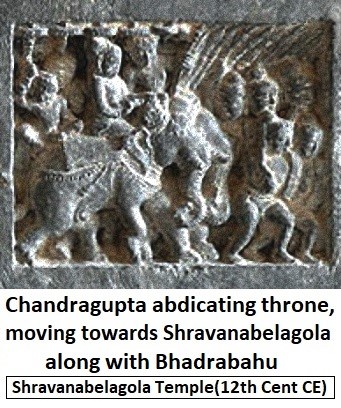
| Jainism | Chandragupta Maurya converted to Jainism, abdicated his throne, and moved with his spiritual mentor Bhadrabahu to Shravanabelagola.Samprati (a later Mauryan king) too was a patron of Jainism and was converted to Jainism by Suhastin.Ashokan inscription mentions Jainas as Nirgranthas, those who have broken worldly ties. They lived in Magadha and later in Pundravardhana (North Bengal) during the time of Ashoka. |
| Buddhism | According to Mahavamsa(a Sri Lankan chronicle), Ashoka was converted to Buddhism by Nigrodha. He sent his son Mahendra and daughter Sanghmitra as Buddhist missionaries to Ceylon. Asoka Edicts tell us that he became an ardent supporter of Buddhism. He adopted Dhammaghosa as his governance policy.Ashoka is believed to have hosted the 3rd Buddhist council under the presidency of Mogaliputta Tissa. |
| Ajivika sect | Goshala Maskariputra established the Ajivika sect. They believed that the phenomenon of the entire universe was ordered by a cosmic force called Niyati that determined all events, including an individual’s fate.King Bindusara was interested in the Ajivika sect. There was an Ajivika fortuneteller Pingalavatsa in his court.King Dasharatha (grandson of Asoka), also called Devanampriya, donated the Nagarjuni caves of Gaya to the Ajivika sect. |
| Hinduism | Megasthenes mentions Shiva as Dionysus and Krishna as Herakles.According to Kautilya, gifts(upharas) such as flowers and incense (Pushpachurnophara) were offered to God before worshipping them. |
Ashoka’s Dhamma
- Ashoka declared Buddhism as the state religion in around 260 BCE. Following this, the practice of Dhamma became the basis of his generous and tolerant administration. It was declared that the conquest of Dharma (Dhammaghosa) should be preferred instead of conflict (Berighosha).
- Dhamma was a way of life, and it was not a religion. Therefore, it could be followed by a person of any religious sect.
- Contents of Dhamma
- Practice truthfulness and ahimsa (non-violence).
- Masters should treat slaves and servants humanely.
- All religions must be tolerated.
- Parents must be obeyed and revered, and teachers must be respected.
- Brahmanas and Buddhist monks should be revered.
- Death sentences should be abolished.
- The killing of birds and animal sacrifices are prohibited.
- Superstitious practices and inappropriate rituals are discouraged
- Planting trees, building wells and rest houses should be encouraged.
- Humans and animals should be provided with health care.
- Provisions to help the poor and the elderly.
- Dhamma-mahamattas (a group of officers) were instituted to implement and publicise the various aspects of Dhamma.
Art during the Mauryan Empire
Features of Mauryan Art
- There was a departure from the use of wood, sun-dried brick, clay, ivory and metal to that of stone in gigantic dimensions.
- The stupa railings, gateways, and chaitya facades all bear the details of ornamentation, which are a copy of the wooden prototype.
- Achaemenid connection – Mauryas’ close contacts with the Hellenistic east must also have brought them in indirect contact with Achaemenid art and culture. For example – Pillared Hall at Kumrahar also compares well with the Hall of Hundred Columns erected at Persepolis by Darius the great.
Mauryan art can be studied under the following headings: –
Pillars
- Ashoka started the practice of erecting pillars, using them to mark his edicts. Such practice was first started by the Achaemenian empire of Persia from around 500BC. However, Persian pillars were constructed piece by piece, whereas Ashokan pillars were carved out of a single stone slab.
- Important Ashokan Pillars –
| Pillars | Main features |
| Lauriya Nandangarh | The crowning figure is a single lion, The abacus contains a row of Brahmagiri Geese. |
| Sanchi and Sarnath | Four lions set back-to-back on the top |
| Sankisa (Farrukhabad) | An elephant as the capital |
| Rampurva | A bull is represented |
- Description of pillars –
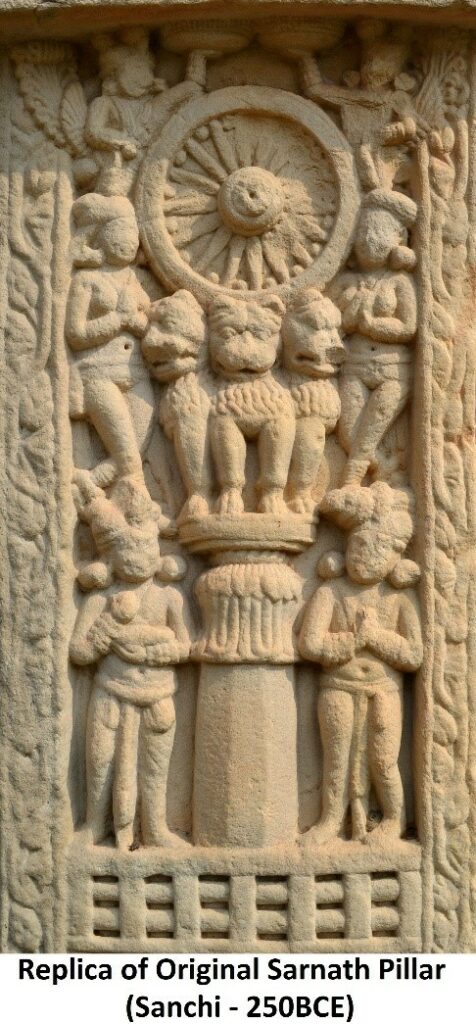 |
They were made up of – Spotted red and white sandstone from the Mathura region, andBuff-coloured fine-grained hard grey sandstone sources from Chinar, Varanasi.They contain a round and monolithic shaft which is highly polished. The capital is surmounted by an abacus on which birds, animals, and dharma-chakra (with 24 spokes) have been carved out.Some pillars have Ashokan edicts inscribed on them.For example, Sarnath Pillar was built byAshoka in commemoration of ‘Dhammachakrapravartana’ or Buddha’s first sermon. It was raised in the place where Buddha gave his first sermon. Its capital is surmounted by four majestic lions standing back-to-back. |
Sculptures
The sculptures of the Mauryan figure include figures such as:
- Two statues of Yaksha at Patna
- A statue of Chauri (fly-whisk) bearer of Yakshini from Didarganj (Bihar). (The traditional Indian beliefs identify Yaksha and Yakshini respectively as God and Goddess of material plenty and physical welfare).
- A colossal statue of a man (Yaksha) 7 feet high and bearing an inscription in Ashokan Brahmi script at Parkham near Mathura.
- The stone elephant from Dhauli (Odisha).

Stupas
- A stupa is a solid dome structure of brick or stone resting on a round base. The primary purpose of building a stupa was to enshrine some relics of Buddha or some great Buddhist monk.
- According to Buddhist tradition, Ashoka constructed some 84,000 stupas.
- The most famous example of a stupa is that of Sanchi (near Bhopal), which has a diameter of 121.5 feet and a height of 77.5 feet. The original brick stupa was not as giant as in its present form.
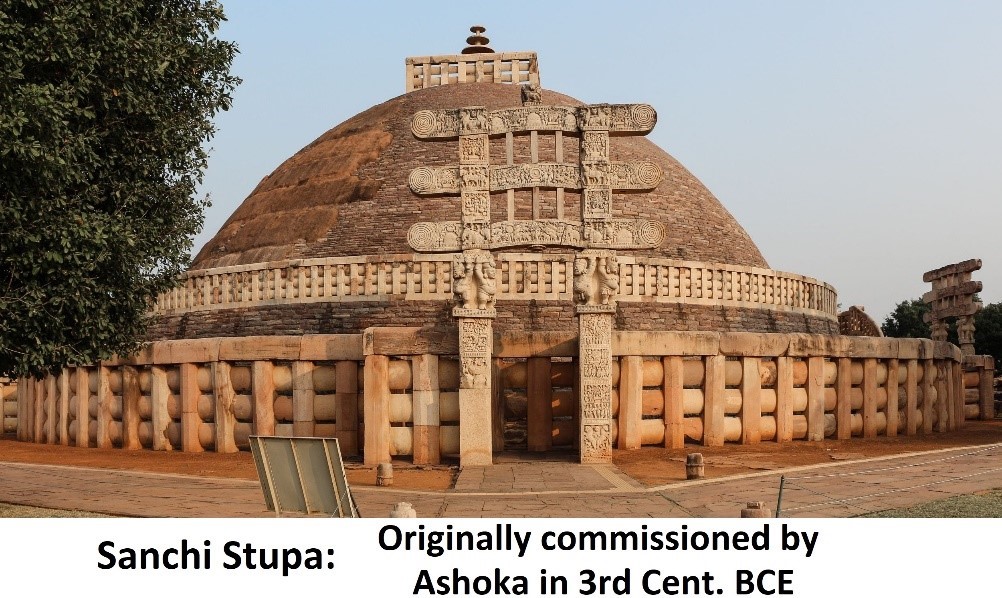
Caves
- The rock-cut caves were meant to be
- Residences for monks (Viharas) and
- Served the purpose of assembly halls (Chaitya).
- Ashoka and his grandson Dashratha built caves in the Barabar and Nagarjuni Hills near Gaya. The interior cave walls were polished to the point where they resembled mirrors.
- Lomasrishi caves and Sudama caves were built in the Barabar hills.
- Dashratha built the famous temple named Gopika Kuha Bhawan.
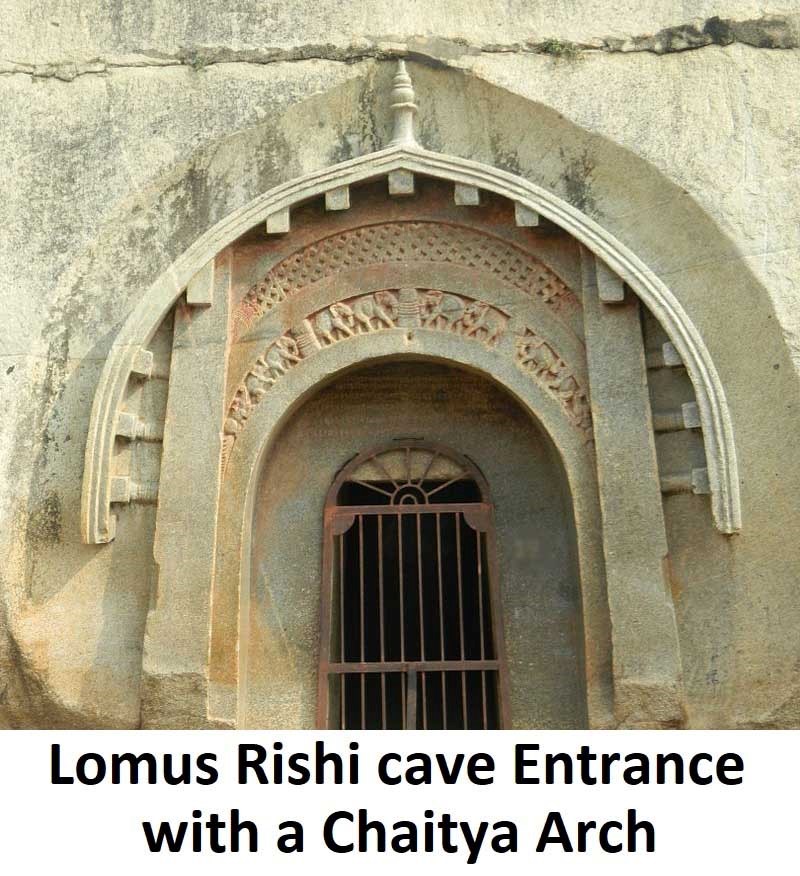
Palaces
- Contemporary Greek writers have mentioned that the royal palaces and buildings of the Mauryan period were magnificent, the finest and the grandest in the world.
- Excavations at Kumrahar (Patna) have brought to light a Mauryan palace with a pillared hall, which owed its design to the Hall of Hundred Columns built by Darius. The hundred-pillared hall of Chandragupta Maurya was made of wood.
The decline of the Mauryan empire
With the death of Ashoka (232 BC), the decline the Mauryan empire started weakening and finally collapsed in 185 BC. Reasons for the decrease were: –
- The Civil War – After Ashoka, the empire was divided into successors. Each one ruled only for a short period and therefore could not formulate either new governance policies or maintain the old ones. This weakened the empire.
- Dhamma-mahamattas – They became powerful, and kings became weak. This resulted in the centre’s weakening and the provinces’ breaking away.
- Cracking up of bureaucratic set-up – In the later part of the Mauryan empire, the bureaucratic set-up was under stress and strain resulting in an inefficient administration unable to maintain social order. As a result, the complex system of spies collapsed.
- Ashoka’s Pro-Buddhist policy – This evoked a strong Brahmanical reaction which helped the empire decline.
- Ashoka’s Pacifist policies – Many believe that Ashoka’s policy of non-aggression could have weakened his empire. However, this argument has little merit, as Ashoka maintained a strong standing army even after his Kalinga conquest. Further, his expansion in Afghanistan occurred after the Kalinga war. Thus, Ashoka’s passivism might have been over-emphasised by the Buddhist chronicles.
- Economic problems – State monopoly of metals was being lost through intrusion by the local chiefs. The iron demands, so crucial for the expanding agrarian economy, could no longer be met by Magadha alone.
Explore additional significant articles on Ancient Indian History listed in the table below:
| Stone Age | Harappan Civilisation |
| Vedic Period | The Mahajanapadas |
| Age of Satvahanas | Ashoka Edicts |
| Post Mauryan Age | Megalith and Sangam Age |

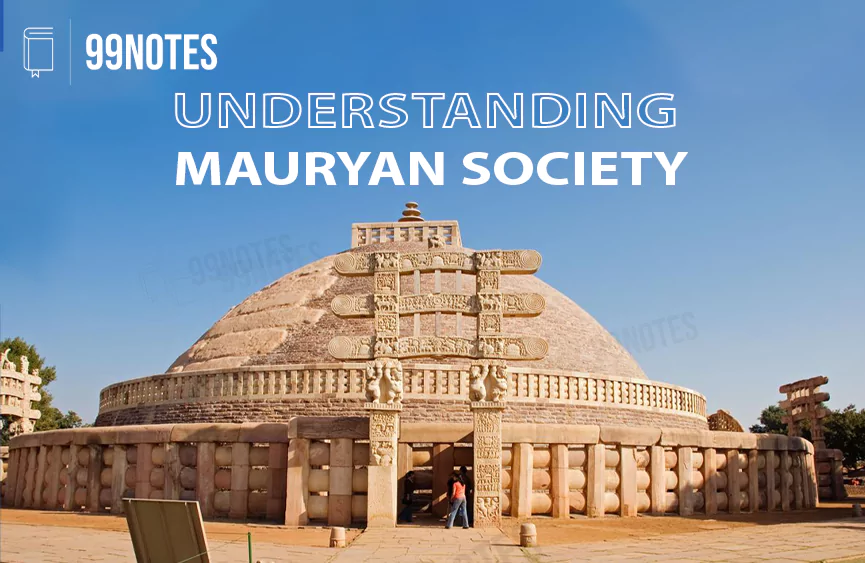

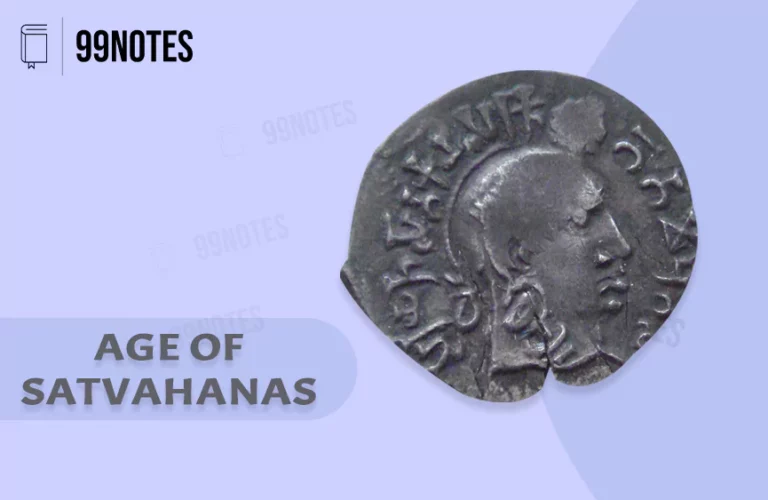
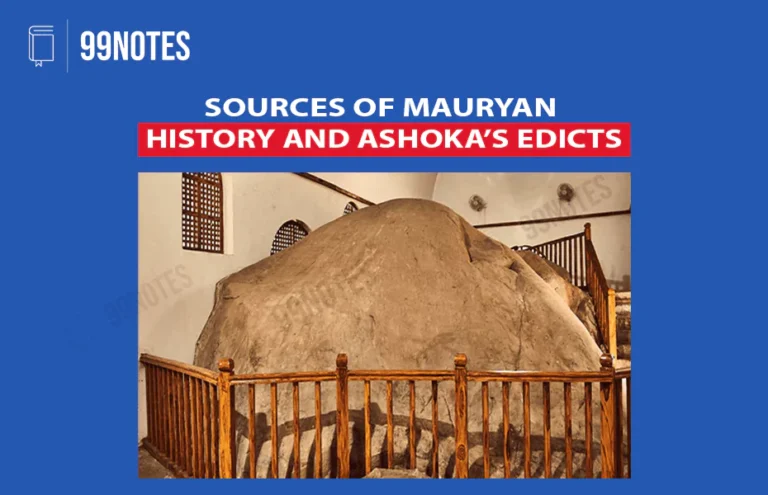

![Complete Vedic Period Upsc Notes [1500 Bce-500 Bce] | Updated July 27, 2024 Complete Vedic Period Upsc Notes [1500 Bce-500 Bce]](https://99notes.in/wp-content/uploads/2023/04/vedic-culture-99notes-upsc-1-768x495.webp)
![Sangam Age: Literature, Map, &Amp; Dynasties [Upsc Exam Notes] | Updated July 27, 2024 Sangam Age: Literature, Map, &Amp; Dynasties [Upsc Exam Notes]](https://99notes.in/wp-content/uploads/2023/04/megalith-sangam-age-99notes-upsc-768x495.webp)